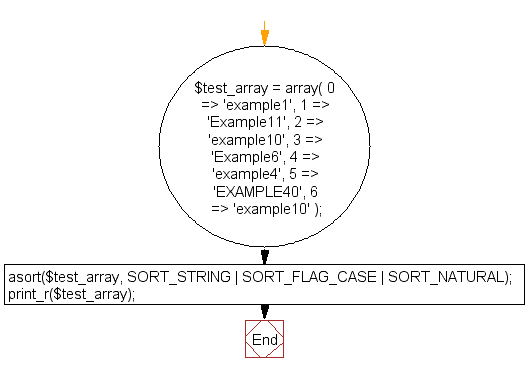

Php associative array adding key error software#
Really, it sounds like there's a lot of software out there that is just being plain neglected. One of the oldest software libraries in the world (it dates from the 1970s) was most recently updated last month there is always room for improvement. Only if the the outside world it interacts with never changes.
Php associative array adding key error code#
What, introduced more powerful alternatives (the old functions couldn't fully access MySQL's functionality) ten years before officially deprecating the old functions, putting warning notices up that they will be removed, and then waiting two more years before removing them?Ĭome on, a code is written to last for ever, not re-writting it every few years, Like what happened when you removed the mysql commands.

Now my code is broken and IT'S NOT MY FAULT. Then I was being told for three years that there is something wrong with my code that needed to be fixed but I still didn't do anything. I was told there might be something wrong with my code for twenty years, but I ignored it. It would be something likeĪnd would result in any undefined variable being treated as null, without emitting any error or warning, and would give instant backward-compatibility where needed, and solves the main motivation for the PHP9 pending change for the sake of the error-handling routines). $x++ would.Īdd a pragma or compiler directive, similar to Python 2's "from future import division". Treat a plain if() as allowing for undefined values. One would expect it to merely silence the warning, but it actually inverts the test, because the precedence is actually: E.g.īut without the logical inverse that makes for awkward readability.įix the precedence order to have = below ?.ĭoes not do what you expect. I can think of at least 4 compromise options that would help.Īdd a simple syntactic sugar for testing if a variable is truthy, without throwing an error. It may also be worth treating undefined variables the same way. To me, it seems sensible that a defined associative array, with a key that isn't present (and may not be expected), should not be a warning, especially if it's being tested for with if(). Ini_set ("error_reporting", E_ALL & ~E_NOTICE)

Ini_set("array_key_missing_enotice", true) Instead, it would be better to have some sort of pragma in the main header Migrating and testing this code will take a long time, and furthermore, it's really ugly and harder to read: If ($_GET) #where xxx may or may not exist.Īnd in PHP8, we now get flooded with warnings "Undefined array key", which get in the way of real warnings. Rightly or wrongly, there are a lot of people, myself included, who have thousands of lines of code with things such as: This is now E_WARNING.Ĭan we please have a configuration option to put that back to E_NOTICE? Once you have understood the working to the foreach() method try working with the for loop.In PHP 7, underfined array keys created E_NOTICE. Additionally, the foreach() method does not modify the values of the internal pointer. The foreach() method would return an error in case you use it on variables with a different data type.

Additionally, we replaced “=>” with a “:” to make it more readable. Now let’s look at a case where we pass a second argument.Īs you can see the key and the values of the associative array were printed. The output of the above code snippet would be: name: Eric PHP Foreach() on an Associative array: "Eric", The output of the above code snippet would be: Hire In this section, we first look at how the foreach() function works on an indexed array followed by which we look at it’s working on an associative array. “$value” is a variable that stores the current element in each iteration.Īssociated array, uses keys and values, and hence the $key & $values in the second syntax represent the same accordingly. It is the array or the variable containing the array. Here, “Iterable” is the required parameter. The syntax for associative arrays: foreach (iterable as $key => $value) The syntax for indexed arrays is as given in the following code block: foreach (iterable as $value) The foreach() method has two syntaxes, one for each type of array. This allows you to run blocks of code for each element. It can also be used to iterate over objects. The foreach() method is used to loop through the elements in an indexed or associative array.


 0 kommentar(er)
0 kommentar(er)
